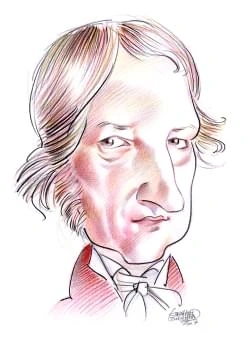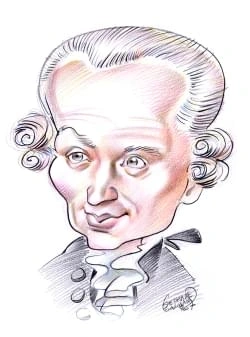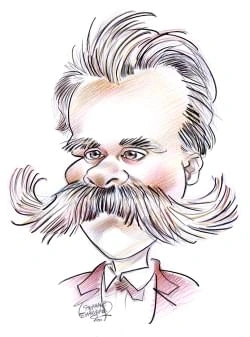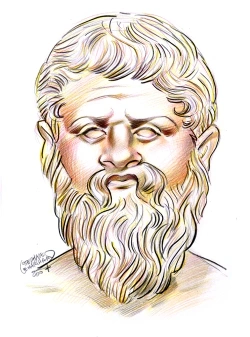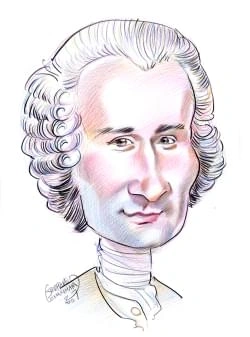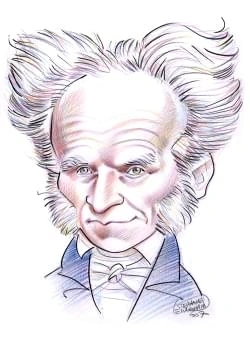289 résultats pour "body"
-
Skin.
I
INTRODUCTION
Skin, outer body covering of an animal. The term skin
III SKIN APPENDAGES In humans, the skin appendages, or structures embedded in the skin, include hair, nails, and several types of glands. Glands are groups of cells that produce andsecrete substances needed by other parts of the body. In other vertebrates, the skin appendages include scales (in fish and reptiles) and feathers (in birds). Together,the skin and the skin appendages are known as the integumentary system of the body. A Hair Hair is a distinguishing characteristic of mammals, a gro...
-
Body Scanner Research
Christmas 2009 when the Nigerian Abdul Mudallad avoided security men vigilance and failed to blow up a bomb during the flight from Amsterdam (Holland) to Detroit (US). In the wake the attempt, many governments over the w orld have decided to introduce a new technology device in the airports in order to strengthen the available measures. This technology device, called Body Scanners, like its name depicts - is a device built to facilitate a strict and reliable search of hazar dous materials t...
-
Law.
I
INTRODUCTION
Law, body of official rules and regulations, generally found in
their rules are reviewable by the courts. U.S. constitutional law is the most extensive and pervasive of any country in the world. It is embodied in the Constitution and in the opinions of the U.S. Supreme Courtrendered over time. Through its power of judicial review, the Supreme Court may invalidate any legislation or other governmental actions that it finds to be in violationof the Constitution. Constitutional courts in some civil-law countries have similar powers. In the United Kingdom no equ...
- body-building n.
- body ou justaucorps n.
- The Body de Stephen King. L'amitié.
-
Temperature
I
INTRODUCTION
Thermometers
Mercury and digital thermometers are the most common types of household devices for measuring body temperature.
range of the water, which differs for various species. Thus, for example, the increase in temperature of river water by only a few degrees as a result of heat dischargedfrom power plants may kill most of the native fish. See Water Pollution. The properties of all materials are also markedly affected by temperature changes. At arctic temperatures, for example, steel becomes very brittle and breaks easily,and liquids either solidify or become very viscous, offering high frictional resistance to...
- Body Art ou Art Corporel
-
- Body and Soul - analyse de l'oeuvre.
-
Mythology
I
INTRODUCTION
Mythology, the body of myths of a particular culture, and the study and interpretation of such myths.
usually define a myth as a story that has compelling drama and deals with basic elements and assumptions of a culture. Myths explain, for example, how the worldbegan; how humans and animals came into being; how certain customs, gestures, or forms of human activity originated; and how the divine and human worlds interact.Many myths take place at a time before the world as human beings know it came into being. Because myth-making often involves gods, other supernatural beings, andprocesses beyond...
- The Body de Stephen King. L'amitié.
-
Comparative Anatomy.
In comparing two species, anatomists have to be careful to differentiate between homologous structures, which are ones that have evolved from a shared ancestor, andanalogous structures, which have developed from different origins. Homologous structures are built on the same underlying plan. A human arm, a bat’s wing, and awhale’s flipper look quite different from the outside, but the bones inside reveal that these limbs all have the same basic structure. Analogous structures, by contrast,often l...
-
Endocrine System.
thermostat. When the heat in a house falls, the thermostat responds by switching the furnace on, and when the temperature is too warm, the thermostat switches thefurnace off. Usually, the change that a hormone produces also serves to regulate that hormone's secretion. For example, parathyroid hormone causes the body toincrease the level of calcium in the blood. As calcium levels rise, the secretion of parathyroid hormone then decreases. This feedback mechanism allows for tight controlover hormon...
-
Human Nutrition.
is one of the most preventable types of cancer. Nutritionists caution that most Americans need to eat more complex carbohydrates. In the typical American diet, only 40 to 50 percent of total calories come fromcarbohydrates—a lower percentage than found in most of the world. To make matters worse, half of the carbohydrate calories consumed by the typical American comefrom processed foods filled with simple sugars. Experts recommend that these foods make up no more that 10 percent of our diet, bec...
-
Drug.
I
INTRODUCTION
Drug, substance that affects the function of living cells, used
normalizing chemical activity in the emotional centers of the brain. Antianxiety drugs, also referred to as tranquilizers, treat anxiety by decreasing the activity in theanxiety centers of the brain. Sedative-hypnotic drugs are used both as sedatives to reduce anxiety and as hypnotics to induce sleep. Sedative-hypnotic drugs act by reducing brain-cell activity.Stimulant drugs, on the other hand, increase neuronal (nerve cell) activity and reduce fatigue and appetite. Analgesic drugs reduce pain...
-
Swimming.
the swimmer and the pinky finger should enter the water first. At the same time, the swimmer moves the left arm through the water below the left side of the body.Once in the water, the right arm begins pulling the swimmer forward by bending at the elbow. At the same time the swimmer holds the left arm straight as it reachesthe hip and lifts it out of the water. As the right arm continues to pull, the swimmer rotates slightly onto the right side and swings the left arm up above the head. As the s...
-
-
Circulatory System.
C Additional Functions In addition to oxygen, the circulatory system also transports nutrients derived from digested food to the body. These nutrients enter the bloodstream by passingthrough the walls of the intestine. The nutrients are absorbed through a network of capillaries and veins that drain the intestines, called the hepatic portal circulation.The hepatic portal circulation carries the nutrients to the liver for further metabolic processing. The liver stores a variety of substances, suc...
-
Beetle - biology.
cut, or crush prey. Beetles that consume nectar from flowers use tubelike mouthparts to suck up nectar like a primitive straw. C Thorax The thorax, the body region behind the head, consists of three segments that provide attachments for the legs and wings. Each segment of the thorax carries a pair oflegs. The middle segment also bears the stiff wing sheaths called elytra, and the hind segment holds the membranous hind wings. D Legs Beetles have six jointed legs, each leg with five parts. The f...
- body-art - encyclopédie.
-
Insect - biology.
they almost always have six legs. In some insects, such as beetles, the legs are practically identical, but in other insects each pair is a slightly different shape. Still otherinsects have specialized leg structures. Examples are praying mantises, which have grasping and stabbing forelegs armed with lethal spines, and grasshoppers andfleas, which have large, muscular hind legs that catapult them into the air. Mole crickets’ front legs are modified for digging, and backswimmers have hind legs de...
-
Stress (psychology).
blood flow is diverted from the internal organs and skin to the brain and muscles. Breathing speeds up, the pupils dilate, and perspiration increases. This reaction issometimes called the fight-or-flight response because it energizes the body to either confront or flee from a threat. Another part of the stress response involves the hypothalamus and the pituitary gland, parts of the brain that are important in regulating hormones and many otherbodily functions. In times of stress, the hypothal...
-
Anatomy.
The body defends itself against foreign proteins and infectious microorganisms by means of a complex dual system that depends on recognizing a portion of the surfacepattern of the invader. The two parts of the system are termed cellular immunity, in which lymphocytes are the effective agent, and humoral immunity, based on theaction of antibody molecules. When particular lymphocytes recognize a foreign molecular pattern (termed an antigen), they release antibodies in great numbers; other lymphocy...
-
Spider (arthropod) - biology.
The spider’s abdomen is soft and saclike. On the underside of the tip of the abdomen are three pairs of spinnerets. Each spinneret is studded with many fine, hairliketubes called spigots, which produce a variety of silk threads. The spigots lead to several large silk glands inside the abdomen. Silk is formed as a liquid inside theseabdominal glands. As the silk is drawn out through the spigots, protein molecules within the silk line up parallel to one another, causing the silk to harden and form...
-
Vitamin.
Vitamin B 1, or thiamine, promotes the metabolism of carbohydrates, enabling these nutrients to release their energy. Thiamine also plays a role in the functioning of the nervous system, muscles, and heart. The body does not store thiamine and people who are malnourished may develop thiamine deficiency. Mild thiamine deficiency cancause fatigue, muscle weakness, and loss of appetite. Severe thiamine deficiency causes beriberi, a disease characterized by muscle weakness, swelling of the heart,and...
-
-
First Aid.
IV SEVERE BLEEDING The presence of blood over a considerable area of a person’s body does not always indicate severe bleeding. The blood may ooze from multiple small wounds or besmeared, giving the appearance of more blood than is actually present. The rate at which blood is lost from a wound depends on the size and kind of blood vesselruptured. Bright red, spurting blood indicates injury to an artery while welling or steadily flowing, dark red blood indicates injury to a vein. Welling or spur...
-
Surgery.
III SURGICAL PROCEDURES Surgical procedures are classified as optional, required, elective, urgent, and emergent based on the patient’s medical condition. Optional surgery consists of operationsthat are not required but which the patient chooses to undergo as with some types of cosmetic surgery. Required surgery is performed when only surgery will correct aproblem—such as cataracts—but the surgery can be delayed for a period of weeks or months. Elective surgical procedures usually involve cond...
-
Mammal - biology.
On land, mammals live in many different habitats, and at a wide range of altitudes. Many mammals dig burrows as refuges or as places to raise their young, but somehave developed a largely subterranean lifestyle, feeding on small animals or plant roots beneath the soil's surface. These animals, including moles and mole-rats, digthrough the ground either with spadelike front paws or with their teeth, and they detect danger by being highly sensitive to vibrations transmitted through the soil.Most m...
-
Brain.
The hypothalamus lies beneath the thalamus on the midline at the base of the brain. It regulates or is involved directly in the control of many of the body's vital drivesand activities, such as eating, drinking, temperature regulation, sleep, emotional behavior, and sexual activity. It also controls the function of internal body organs bymeans of the autonomic nervous system, interacts closely with the pituitary gland, and helps coordinate activities of the brain stem. D Brain Stem The brain st...
-
Frog (animal).
which means that their body temperature depends on the temperature of the surrounding environment. Few species can tolerate temperatures below 4°C (40°F) orabove 40°C (104°F), and many species can survive only within a narrower range of temperatures. In addition, frogs’ thin, moist skin offers little protection againstwater loss, and when on land the animals must guard against drying out. Many frogs are active at night because temperatures are cooler and humidity is higher thanduring the day. In...
-
Frog (animal) - biology.
which means that their body temperature depends on the temperature of the surrounding environment. Few species can tolerate temperatures below 4°C (40°F) orabove 40°C (104°F), and many species can survive only within a narrower range of temperatures. In addition, frogs’ thin, moist skin offers little protection againstwater loss, and when on land the animals must guard against drying out. Many frogs are active at night because temperatures are cooler and humidity is higher thanduring the day. In...
-
Immune System.
The humoral immune response involves a complex series of events after antigens enter the body. First, macrophages take up some of the antigen and attach it to classII MHC molecules, which then present the antigen to T helper cells. The T helper cells bind the presented antigen, which stimulates the T helper cells to divide andsecrete stimulatory molecules called interleukins. The interleukins in turn activate any B lymphocytes that have also bound the antigen. The activated B cells then divide...
-
Physics
I
INTRODUCTION
Physics, major science, dealing with the fundamental constituents of the universe, the forces they exert on one another, and the results produced by these forces.
Starting about 1665, at the age of 23, Newton enunciated the principles of mechanics, formulated the law of universal gravitation, separated white light into colors,proposed a theory for the propagation of light, and invented differential and integral calculus. Newton's contributions covered an enormous range of naturalphenomena: He was thus able to show that not only Kepler's laws of planetary motion but also Galileo's discoveries of falling bodies follow a combination of his ownsecond law of m...
-
-
Snake (reptile).
in their heads that conduct sound. They are able to hear low-frequency sounds and to sense vibrations that travel through the ground or water. The majority of snakeshave good eyesight, especially for detecting moving objects, although most burrowing snakes can only distinguish between light and dark. Pit vipers, boas, and pythons have an unusual adaptation for detecting warm-blooded prey and predators. On the heads of these snakes are small pits lined with cellsthat are extremely sensitive to he...
-
Shark - biology.
Sharks have two-chambered hearts that are relatively small compared to the rest of their bodies. Blood flows from the heart to the gills, where it collects oxygen fromwater and then distributes it to the other organs and tissues. The small heart produces weak blood pressure, and many sharks must swim continuously to create themuscular contractions needed to circulate blood throughout their bodies. Most sharks are cold-blooded—that is, they do not generate heat by digesting food. Instead, the bod...
-
Respiratory System.
rapidly, or laughs while swallowing, the swallowing reflex may not work, and food or fluid can enter the larynx. Food, fluid, or other substances in the larynx initiate acough reflex as the body attempts to clear the larynx of the obstruction. If the cough reflex does not work, a person can choke, a life-threatening situation. TheHeimlich maneuver is a technique used to clear a blocked larynx ( see First Aid). A surgical procedure called a tracheotomy is used to bypass the larynx and get air to...
-
Diabetes Mellitus.
Once diabetes is diagnosed, treatment consists of controlling the amount of glucose in the blood and preventing complications. Depending on the type of diabetes, thiscan be accomplished through regular physical exercise, a carefully controlled diet, and medication. Individuals with Type 1 diabetes must receive insulin, often two to four times a day, to provide the body with the hormone it does not produce. Insulin cannot be takenorally, because it is destroyed in the digestive system. Consequent...
-
Dinosaur - biology.
The behavior of dinosaurs was governed by their metabolism and by their central nervous system. The dinosaurs’ metabolism—the internal activities that supply thebody’s energy needs—affected their activity level. It is unclear whether dinosaurs were purely endothermic (warm-blooded), like modern mammals, or ectothermic (cold-blooded), like modern reptiles. Endotherms regulate their body temperature internally by means of their metabolism, rather than by using the temperature oftheir surroundin...
-
Ant - biology.
The workers of many ant species carry a stinger within the hind end of the gaster. These ants use the stinger to defend against their enemies. In some species, workerants lack a stinger but use the tip of their gaster to squirt or dab poison at other small animals and when fighting battles with other ants, fending off predators, or killinginsects or other animals that they use as food. III PHYSIOLOGY Ants have a rigid, external skeleton called an exoskeleton that gives the soft, inner body its...
-
Bird.
I
INTRODUCTION
Bird, animal with feathers and wings. Birds are the only
B Physical Adaptations for Flight The internal body parts of all birds, including flightless ones, reflect the evolution of birds as flying creatures. Birds have lightweight skeletons in which many of themajor bones are hollow. A unique feature of birds is the furculum, or wishbone, which is comparable to the collarbones of humans, although in birds the left and rightportions are fused together. The furculum absorbs the shock of wing motion and acts as a spring to help birds breathe while they...
-
Bird - biology.
B Physical Adaptations for Flight The internal body parts of all birds, including flightless ones, reflect the evolution of birds as flying creatures. Birds have lightweight skeletons in which many of themajor bones are hollow. A unique feature of birds is the furculum, or wishbone, which is comparable to the collarbones of humans, although in birds the left and rightportions are fused together. The furculum absorbs the shock of wing motion and acts as a spring to help birds breathe while they...
-
-
Vertebrate - biology.
E Reptiles Compared to amphibians, reptiles are much more fully adapted to life on land. They have scaly, waterproof skin, and they either give birth to live young or lay eggs withwaterproof shells. There are about 7,000 species alive today, including snakes, alligators, and turtles. During the age of the dinosaurs, about 230 million to 65 millionyears ago, reptiles outnumbered all other land vertebrates put together. F Birds Birds evolved from flightless reptiles but underwent some major chan...
-
Egyptian Art and Architecture - USA History.
The kings of the 1st Dynasty (2920 BC-2770 BC) were buried in the cemetery of their ancestors at Abydos in southern Egypt. Their burial sites were built of mud brick (bricks baked in the sun) and consisted of two parts: a tomb in the desert where the king was buried, and a rectangular funerary enclosure at the desert's edge, whererituals were performed. A pair of stone slabs called stelae marked the tombs and bore the name of the royal occupant. In the 2nd Dynasty (2770 BC-2649 BC), most r...
-
Kidney.
secretion. An additional function of the kidney is the processing of vitamin D; the kidney converts this vitamin to an active form that stimulates bone development. Several hormones are produced in the kidney. One of these, erythropoietin, influences the production of red blood cells in the bone marrow. When the kidney detectsthat the number of red blood cells in the body is declining, it secretes erythropoietin. This hormone travels in the bloodstream to the bone marrow, stimulating theproducti...
-
Blood.
substances. For example, a person who is blood type A positive will not make antibodies against the A or Rh markers, but will make antibodies against the B marker,which is not on that person’s own red blood cells. If blood containing the B marker (from types B positive, B negative, AB positive, or AB negative) is transfused into thisperson, then the transfused red blood cells will be rapidly destroyed by the patient’s anti-B antibodies. In this case, the transfusion will do the patient no good a...
-
Camel - biology.
of water in the stomach or hump as was once commonly believed. Unlike other mammals, however, the camel can survive as long as three weeks without drinking,depending on the water content of its food. It can survive a water loss of about 40 percent of its normal body weight. In comparison, a loss of 15 percent is usually fatalfor humans. Camels can go without water due to several unique adaptations to their environment. The camel conserves more water in its body than any other mammal. It excretes...
-
Cancer (medicine).
unable to repair the DNA damage, p53 instructs the cell to undergo programmed cell death, or apoptosis , putting a stop to runaway cell division before it starts. Programmed cell death is a normal part of cell life and is tightly controlled by many genes, primarily p53. In a cancerous cell, one or more mutations prevent these genes from doing their jobs. When mutated, p53 allows a cell to continue to divide, even with damaged DNA.This can lead to additional mutations in proto-oncogenes or tumor...
-
Bacteria - biology.
A2 b Bacterial Killers Some dramatic infectious diseases result from exposure to bacteria that are not part of our normal bacterial community. Cholera, one of the world’s deadliest diseasestoday, is caused by the bacterium Vibrio cholerae . Cholera is spread in water and food contaminated with the bacteria, and by people who have the disease. After entering the body, the cholera bacteria grow in the intestines, often along the surface of the intestinal wall, where they secrete a toxin (poiso...
-
Amphibian (animal) - biology.
strong enough to kill potential predators. C Hearing, Vision, and Vocalizations Amphibians rely on their senses to find food and evade predators. Amphibians lack external ears but have well-developed internal ears. Hearing is most acute in frogs,which typically have a middle ear cavity for transferring sound vibrations from the eardrum, or tympanum, to the inner ear. Frogs and toads also use their keen hearingin communicating with one another. Using a true voice box, or larynx, and a large, exp...
-
-
Butterflies and Moths - biology.
The smallest butterflies are certain blues that have wingspans of a mere 0.7 cm (0.25 in). The largest are the female giant birdwings of Papua New Guinea, whichmeasure up to 30 cm (12 in) across. Moths range in size from tiny Microlepidoptera, several groups of small moths with wings no more than 0.16 cm (0.06 in) across, togiant silk moths, such as the atlas moth, which may exceed 30 cm (12 in) in wingspan. IV REPRODUCTION AND LIFE CYCLE Butterflies locate potential mates by sight, identifyin...
-
Turtle.
Turtles use their jaws to cut and handle food. Instead of teeth, a turtle’s upper and lower jaws are covered by horny ridges, similar to a bird’s beak. Meat-eating turtlescommonly have knife-sharp ridges for slicing through their prey. Plant-eating turtles often have ridges with serrated edges that help them cut through tough plants.Turtles use their tongues in swallowing food, but unlike many other reptiles, such as chameleons, they cannot stick out their tongues to capture food. C Limb Structu...
}})

